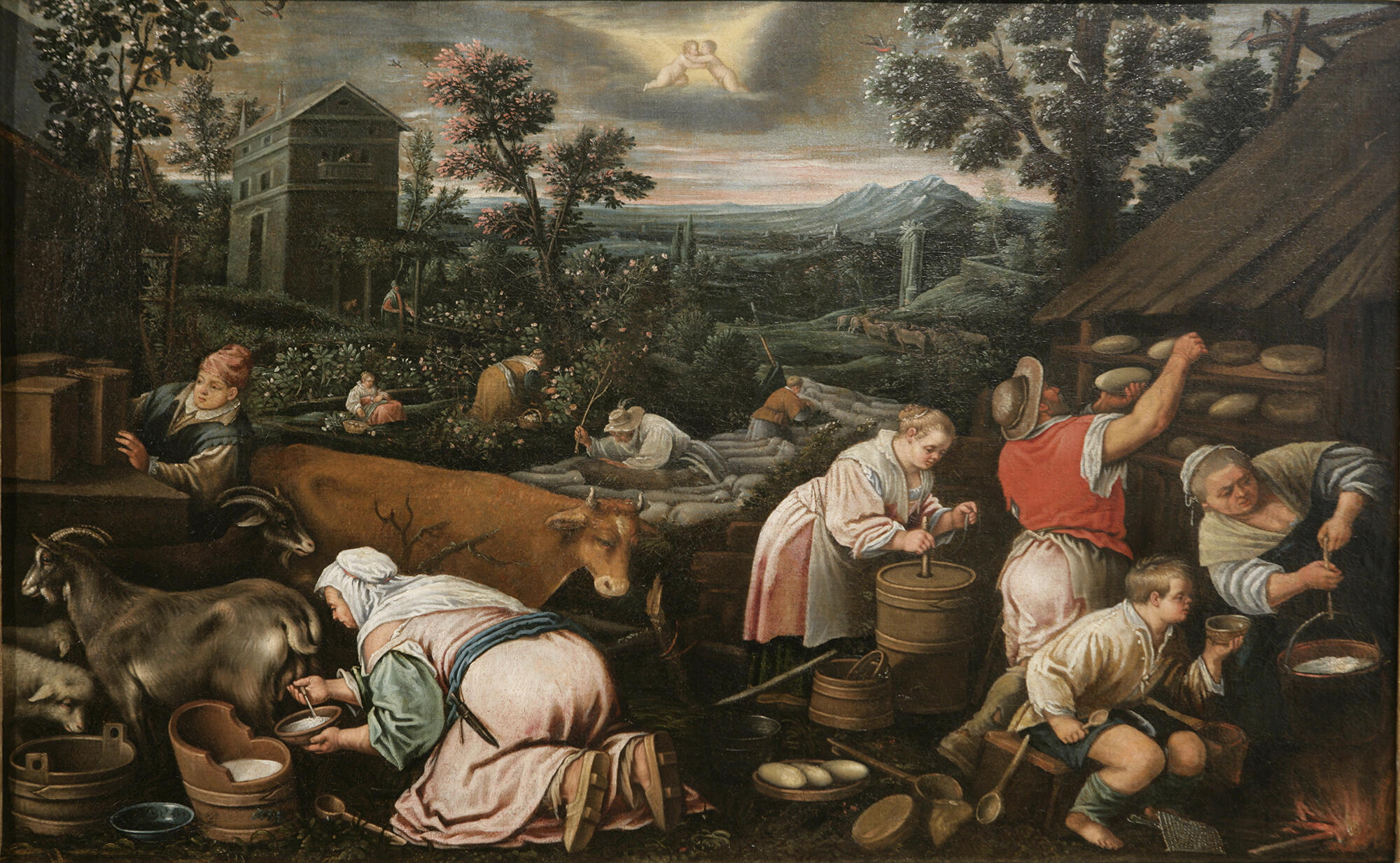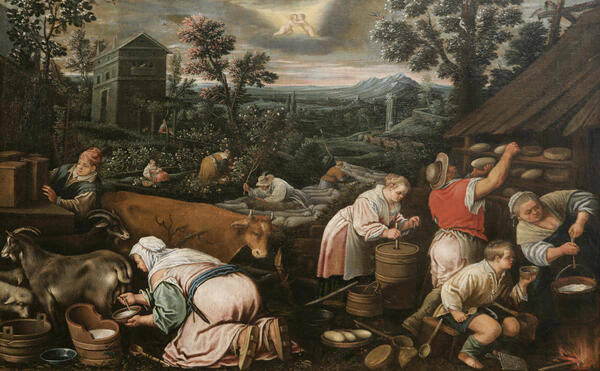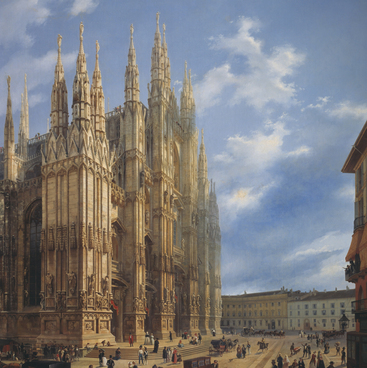The Tula Museum of Fine Arts holds a unique pictorial cycle, ‘Twelve Months’ of the late 16th — early 17th centuries. The twelve paintings are allegorical images of the months of the year, interpreted as genre scenes. The artist of the images is Leandro Bassano, a member of the famous family of Venetian artists who focused on daily life scenes for the first time in European Art.
Already since the beginning of the 16th century, genre painting was widely spread in the Venitian paintings. You could say that Jacopo Bassano and his sons (Leandro Bassano, artist of the series, being one of the sons) were the ancestors of the so-called peasant genre in Italian painting. With great observation, Bassano depicts the life and labor of ordinary people, accompanying the story with many details and entertaining elements.
The series of genre and allegorical paintings were extremely popular at the time. Painted on different themes (for example, ‘Five Senses, ” “Seasons”, “Four Elements”) to show the cyclical nature of being human, often referred to as biblical scenes and Christian morals. Twelve paintings of this series display a whole encyclopedia of peasant life. The first and the twelfth painting (“March” and “February”) transfers the audience into the urban environment set against the background of Italy’s countryside.
There are three plans in each picture: the front, which is focused on figures, the middle — with interesting household details and the background — a landscape that changes from month to month. There is also a zodiac sign, patronizing each month, at the top of all the canvases, in the clouds. In ‘May’ from the ‘Twelve Months’ series, in the foreground, the artist depicted the stages of cheese making, for which Italy, its homeland, has long been famous. The boy on the left takes beehives outside — there are already many flowering trees around. In the background, laborers lead cows and sheep to graze in a field.
The series of paintings was kept in the palace of the Counts Bobrinsky in the village of Bobriki, Epifansky Uyezd of Tula Governorate. It is the only collection preserved, held in the museum collection since 1919.
Already since the beginning of the 16th century, genre painting was widely spread in the Venitian paintings. You could say that Jacopo Bassano and his sons (Leandro Bassano, artist of the series, being one of the sons) were the ancestors of the so-called peasant genre in Italian painting. With great observation, Bassano depicts the life and labor of ordinary people, accompanying the story with many details and entertaining elements.
The series of genre and allegorical paintings were extremely popular at the time. Painted on different themes (for example, ‘Five Senses, ” “Seasons”, “Four Elements”) to show the cyclical nature of being human, often referred to as biblical scenes and Christian morals. Twelve paintings of this series display a whole encyclopedia of peasant life. The first and the twelfth painting (“March” and “February”) transfers the audience into the urban environment set against the background of Italy’s countryside.
There are three plans in each picture: the front, which is focused on figures, the middle — with interesting household details and the background — a landscape that changes from month to month. There is also a zodiac sign, patronizing each month, at the top of all the canvases, in the clouds. In ‘May’ from the ‘Twelve Months’ series, in the foreground, the artist depicted the stages of cheese making, for which Italy, its homeland, has long been famous. The boy on the left takes beehives outside — there are already many flowering trees around. In the background, laborers lead cows and sheep to graze in a field.
The series of paintings was kept in the palace of the Counts Bobrinsky in the village of Bobriki, Epifansky Uyezd of Tula Governorate. It is the only collection preserved, held in the museum collection since 1919.




